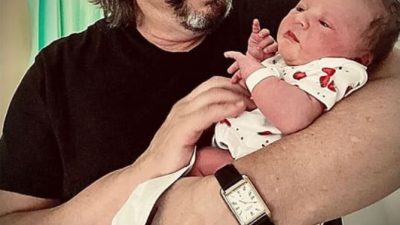The world’s first complete 3D printer-generated heart, made using the patient’s own cells and materials, has been created in a lab. Until now, success has been limited to printing only simple tissues without blood vessels. “This is the first time anyone anywhere has successfully engineered and printed an entire heart replete with cells, blood vessels, ventricles and chambers,” said team leader Tal Dvir.
The printer-generated heart is only about a third the size of an actual human heart — and it doesn’t actually work. But it’s a groundbreaking step toward engineering customized organs that can be transplanted with less risk of rejection.
“This heart is made from human cells and patient-specific biological materials,” said Dvir, a researcher at the Sagol Center for Regenerative Biotechnology at Tel Aviv University in Israel. “In our process these materials serve as the bio-inks, substances made of sugars and proteins that can be used for 3D printing of complex tissue models.”
Dvir noted that scientists have managed to print a 3D structure of a heart before, but not with cells or blood vessels. “Our results demonstrate the potential of our approach for engineering personalized tissue and organ replacement in the future,” he said in a university news release. The research was published online April 15 in the journal Advanced Science.
Heart disease is the leading cause of death in the United States. A transplant is the only treatment available to patients with end-stage heart failure, but there is a severe shortage of heart donors. That means there’s an urgent need to develop new ways to regenerate a diseased heart, according to the researchers.
The use of biological materials from a patient is key to successful engineering of tissues and organs, Dvir explained. The compatibility of engineered materials is key to eliminating rejection risk. “Ideally, the biomaterial should possess the same biochemical, mechanical and topographical properties of the patient’s own tissues,” Dvir noted. “Here, we can report a simple approach to 3D-printed thick, vascularized and perfusable cardiac tissues that completely match the immunological, cellular, biochemical and anatomical properties of the patient.”
While the 3D-printed heart is about the size of a rabbit’s heart, the same technology can be used to print a normal-sized one, he said. The next step is culturing printed hearts in the lab and “teaching them to behave” like hearts, Dvir added. Then, researchers plan to transplant the 3D-printed heart into lab animals.
“We need to develop the printed heart further,” Dvir said. “The cells need to form a pumping ability; they can currently contract, but we need them to work together. Our hope is that we will succeed and prove our method’s efficacy and usefulness.”
Dvir looks to the future with optimism.
“Maybe, in 10 years, there will be organ printers in the finest hospitals around the world, and these procedures will be conducted routinely,” he said.
Original article: https://www.webmd.com/heart/news/20190415/israeli-team-announces-first-3d-printed-heart-using-human-cells#2

























Comments